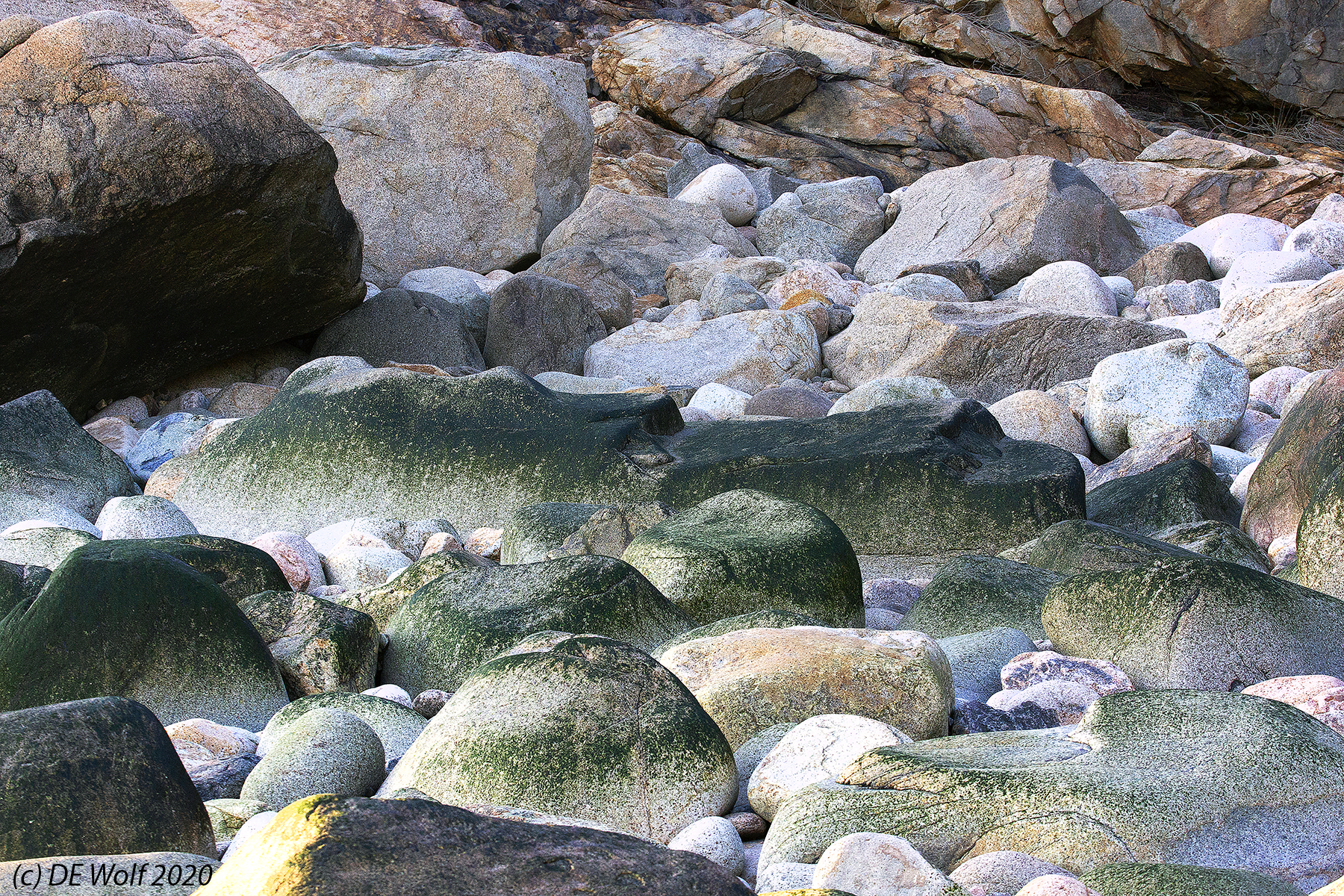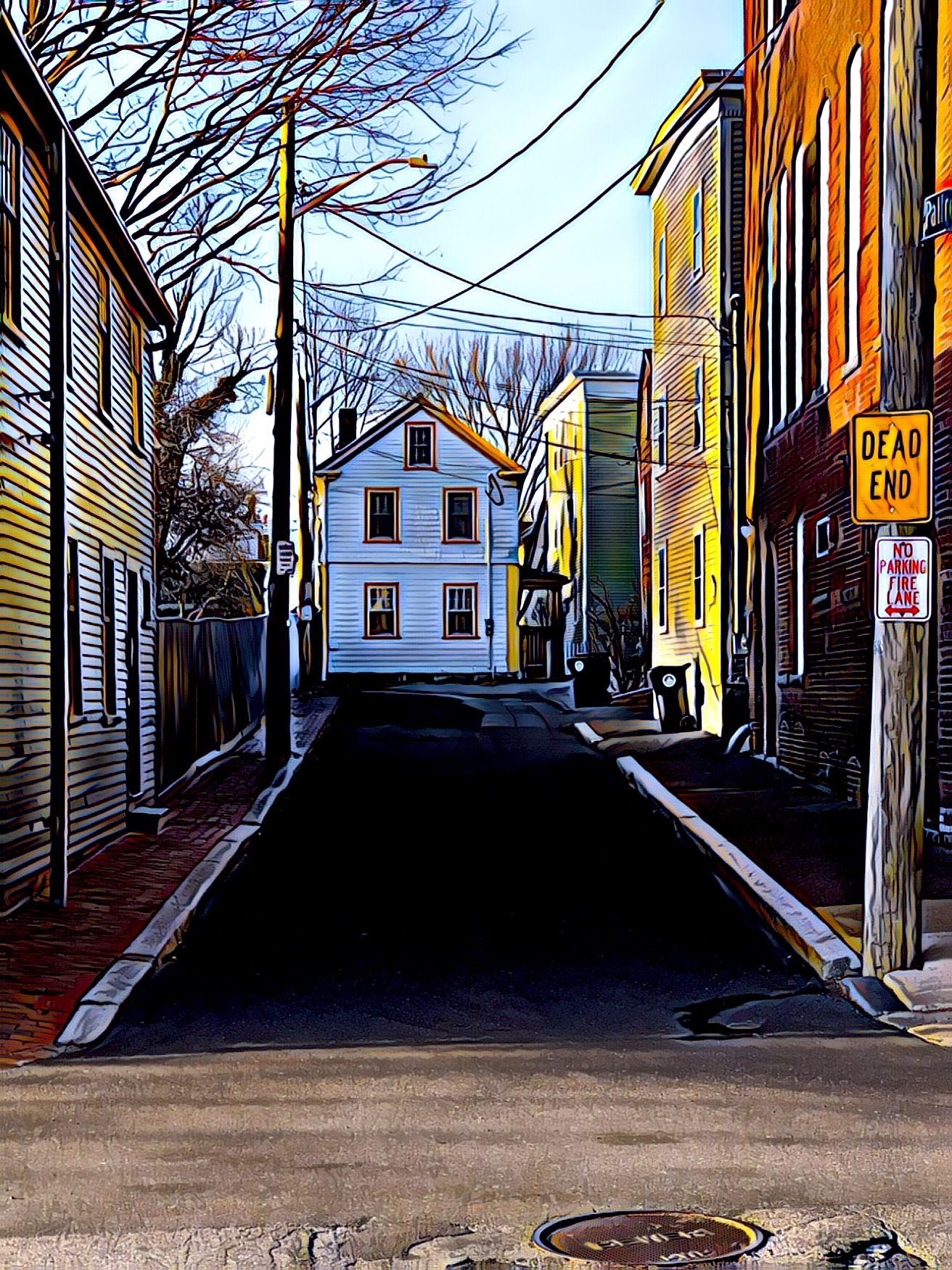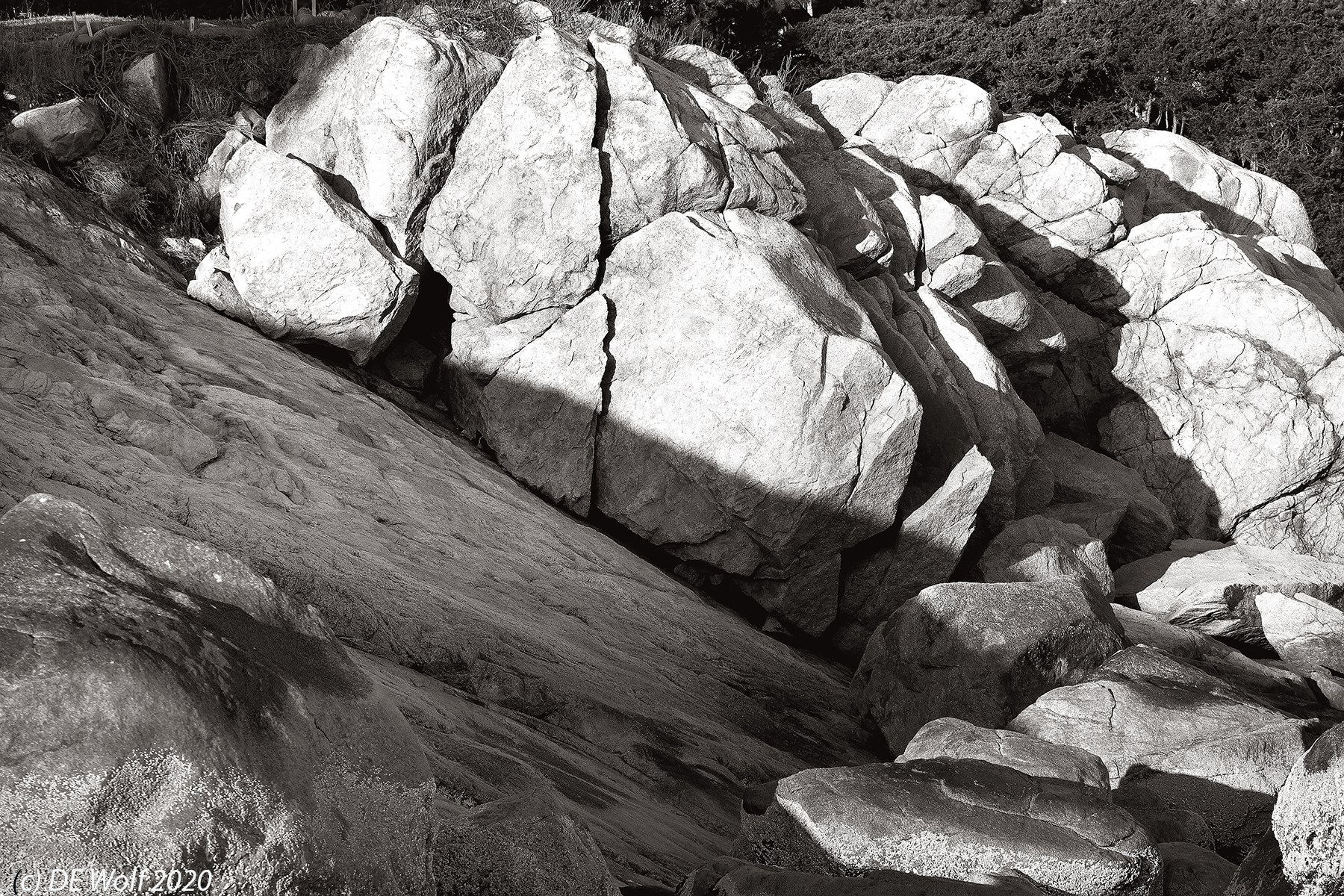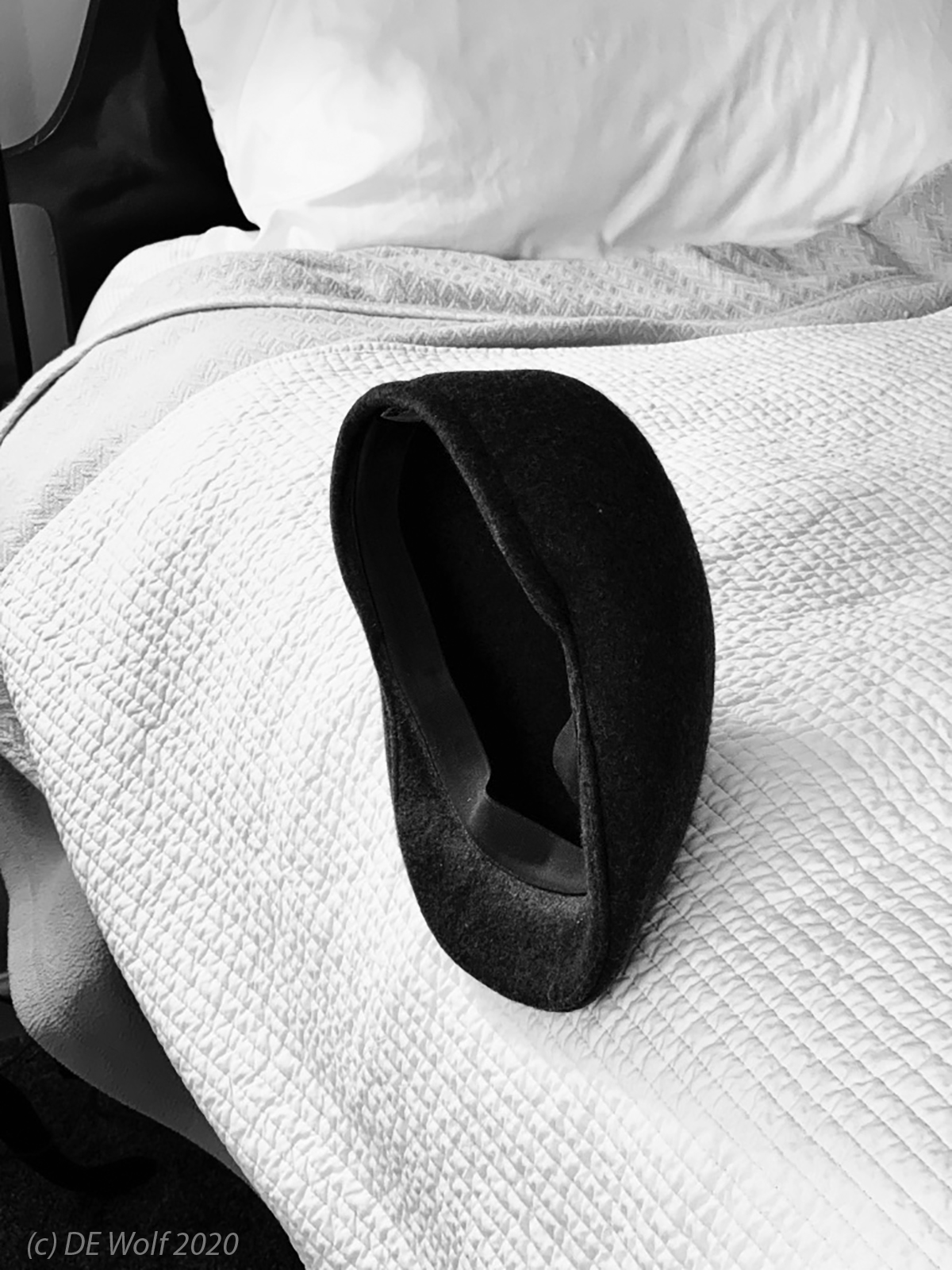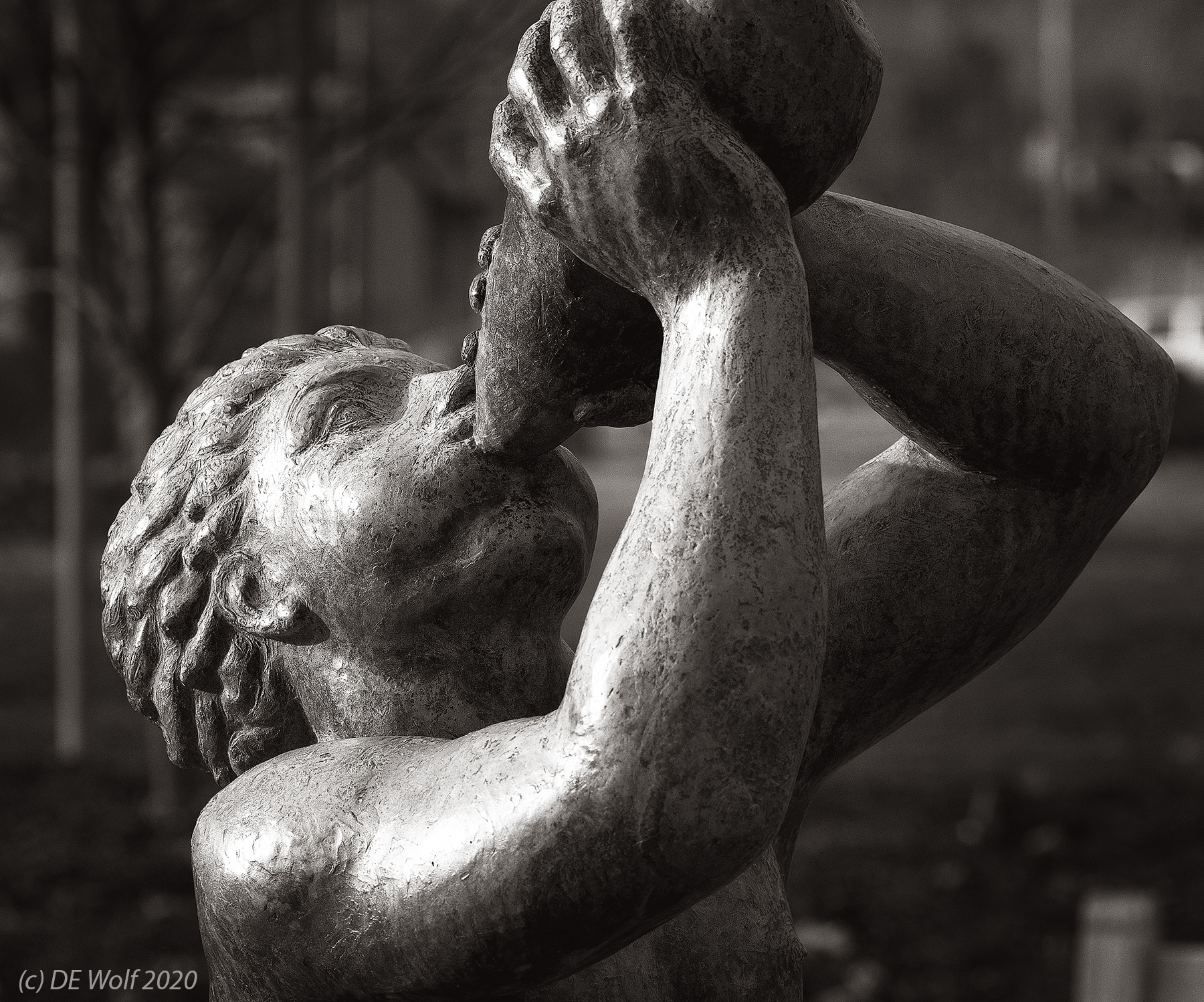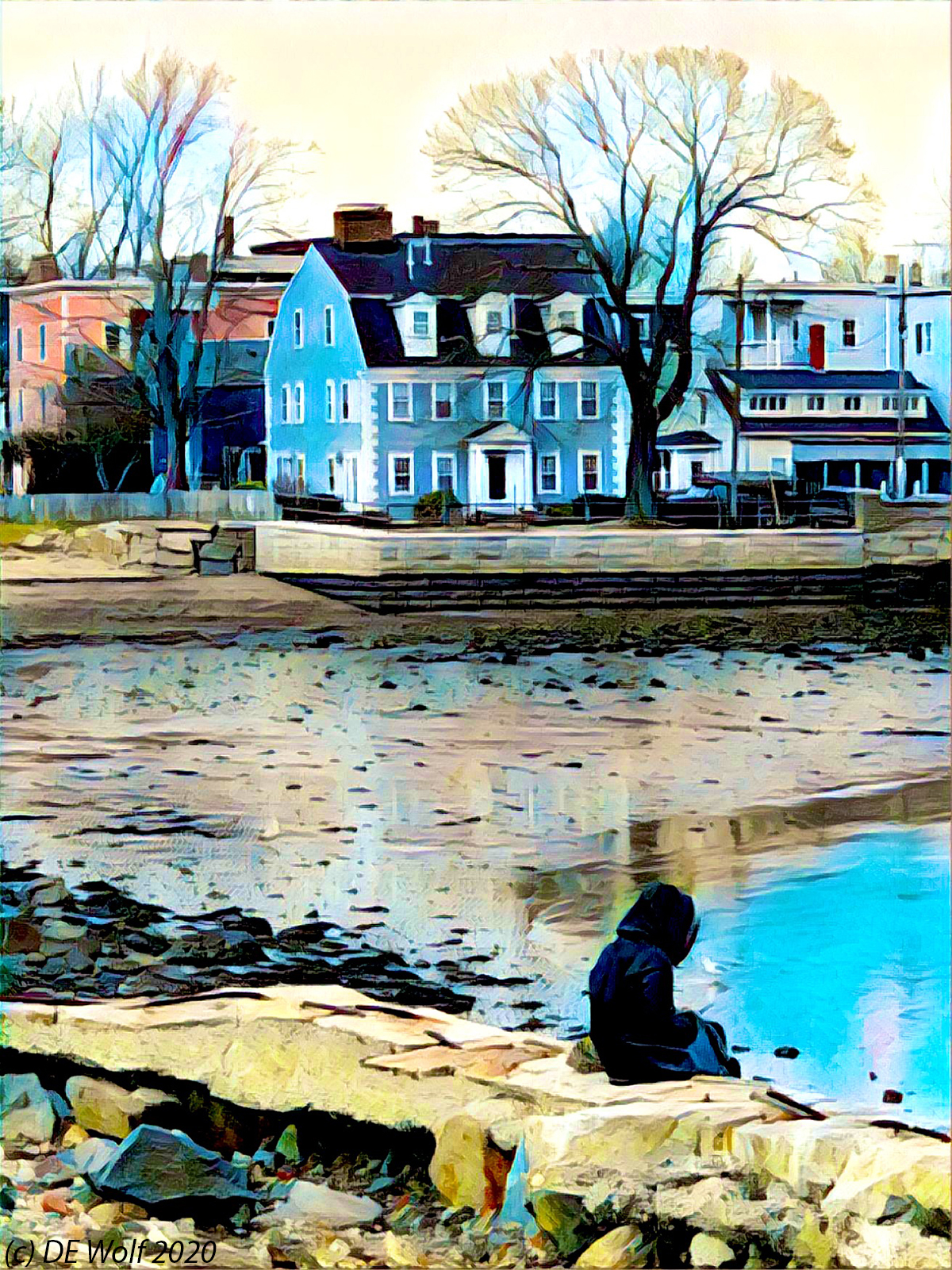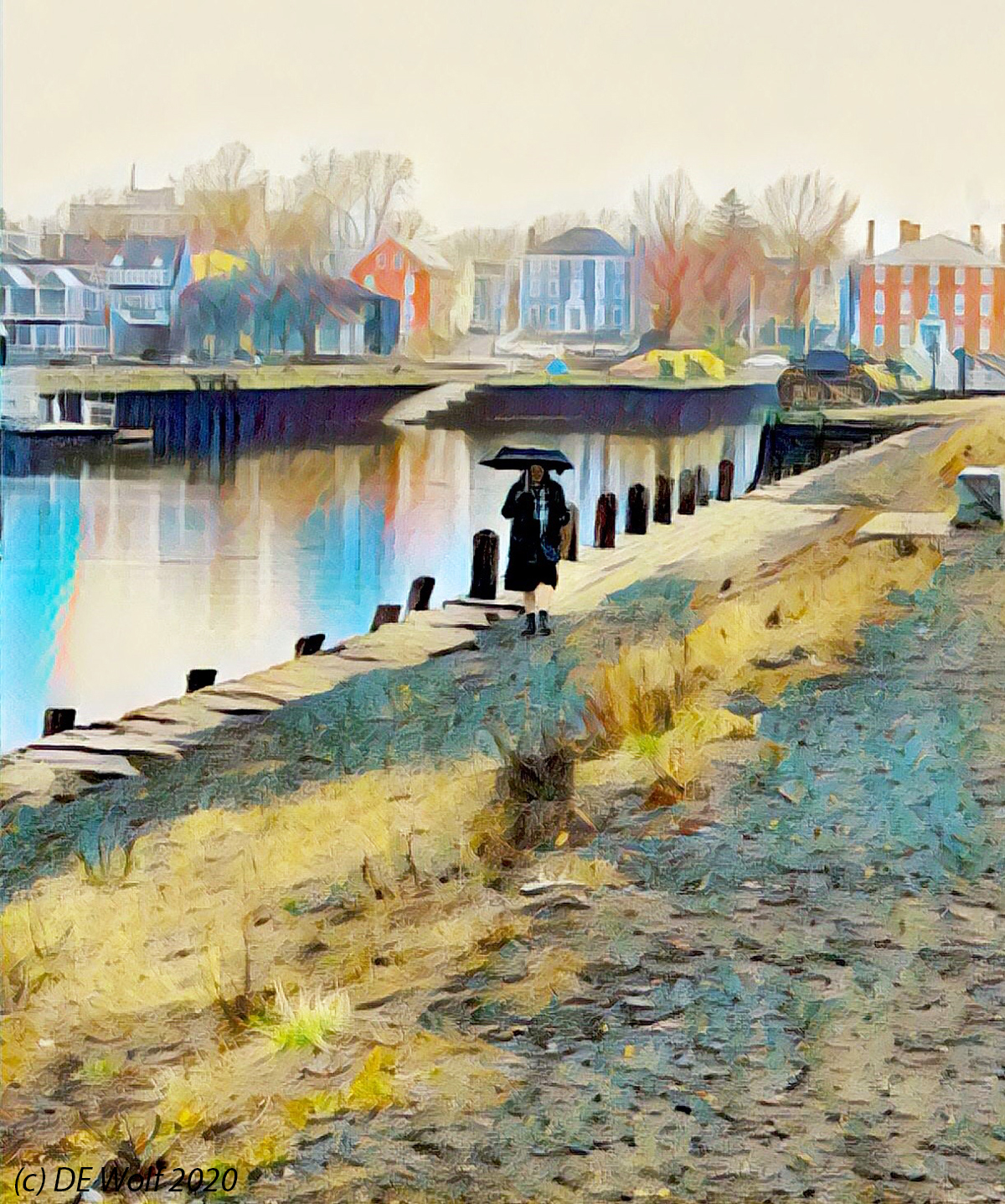Figure 1 is another photograph that I took of the granites at Singing Beach at Manchester-by-the-Sea on this past Saturday. I am not enough of a geologist to say whether these are part of an ancient debris field, a glacial moraine, or man placed. Perhaps a reader can inform me. But I love the scene.
While my usual inclination is to do this kind of image in black and white, here I just loved the colors so much: the greens, the subtle blues, and the burnt oranges, that I just had to do the image in color. Just a little saturation and color balance correction and voila. It is a rock garden laid out randomly to convey a sense of order in the universe.That is one of the great and splendid songs of nature.
Canon T2i with EF 70-200 f/4L USM lens at 70 mm, ISO 800, Aperture Priority AE Mode 1/250 th sec at f/7.1 with no exposure compensation.

